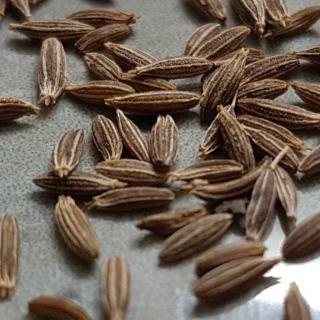

Cumin is a plant that offers many health benefits and significant therapeutic value.
With scientific name Cumin cyminum, cumin is a herbaceous annual plant with a thin, elegant silhouette.
Cumin grows 12 to 16 inches (20 to 40 cm) tall.
It is native to the the Middle East and to Asia and belongs to the Apiaceae family, just like parsley.
In the days of Ancient Egypt, cumin was one of the most widely used spices. Native to the Nile valley, cumin was also mentioned in the Old Testament and was part of most culinary recipes that the Romans used, which made this spice much sought after.
Arabs would use it as a drug, preparing aphrodisiacs with cumin, honey and pepper; they would ingest it several times a day.
Even the spiritual world involved cumin, and it was said that the plant would protect you against evil curses.
Apart from its special taste and fragrance, cumin boasts many health benefits and medicinal properties for the body.
 Do you have trouble digesting heavy, fatty meals? Since it is a powerful stomachic (favors intestinal flow) and carminative (helps expel accumulated gases), cumin will be of great help.
Do you have trouble digesting heavy, fatty meals? Since it is a powerful stomachic (favors intestinal flow) and carminative (helps expel accumulated gases), cumin will be of great help.Condiment – mix cumin together with foods that are difficult to digest or that would lead to flatulence. Cumin also tends to enhance appetite.
Cumin infusions – keep a spoonful of seeds in contact with boiling water for 10 minutes, makes one cup. Drink a cup after each meal. Enhances milk production for nursing mothers.
Inflammation-resorbing poultices can be prepared from cumin. They will make the inflammation disappear. Prepare them with seeds steeped in boiling water and gathered while still warm in a pouch made from thin cloth.
Cumin thrives in full sun and requires warm exposure and good, light and rich garden soil.
It’s perfectly possible to try growing cumin in pots. However, the plant is quite vulnerable. It won’t be very productive, and as an ornament won’t have much value.
Cumin won’t be bothered by any little critters. Nothing untoward will happen to it.
Only the type species is cultivated.
However, people tend to confuse cumin with caraway – this is all the more difficult because caraway is sometimes called “field cumin” and both look quite similar, too.
Oriental gastronomy makes great use of cumin. It is part of most Indian curry and Indonesian dishes, too. Morocco, cumin imparts its fragrance to couscous and tajine. In some regions of France and Germany, cumin is added to cheese as it’s matured.
Soup, couscous, meat skewers, mixed salads… Cumin is a spice that melds right into many recipes. Let your imagination run wild!
Blandine Merlin
To make the taste of cumin seeds even more savory, grill them in a pan for a few minutes.